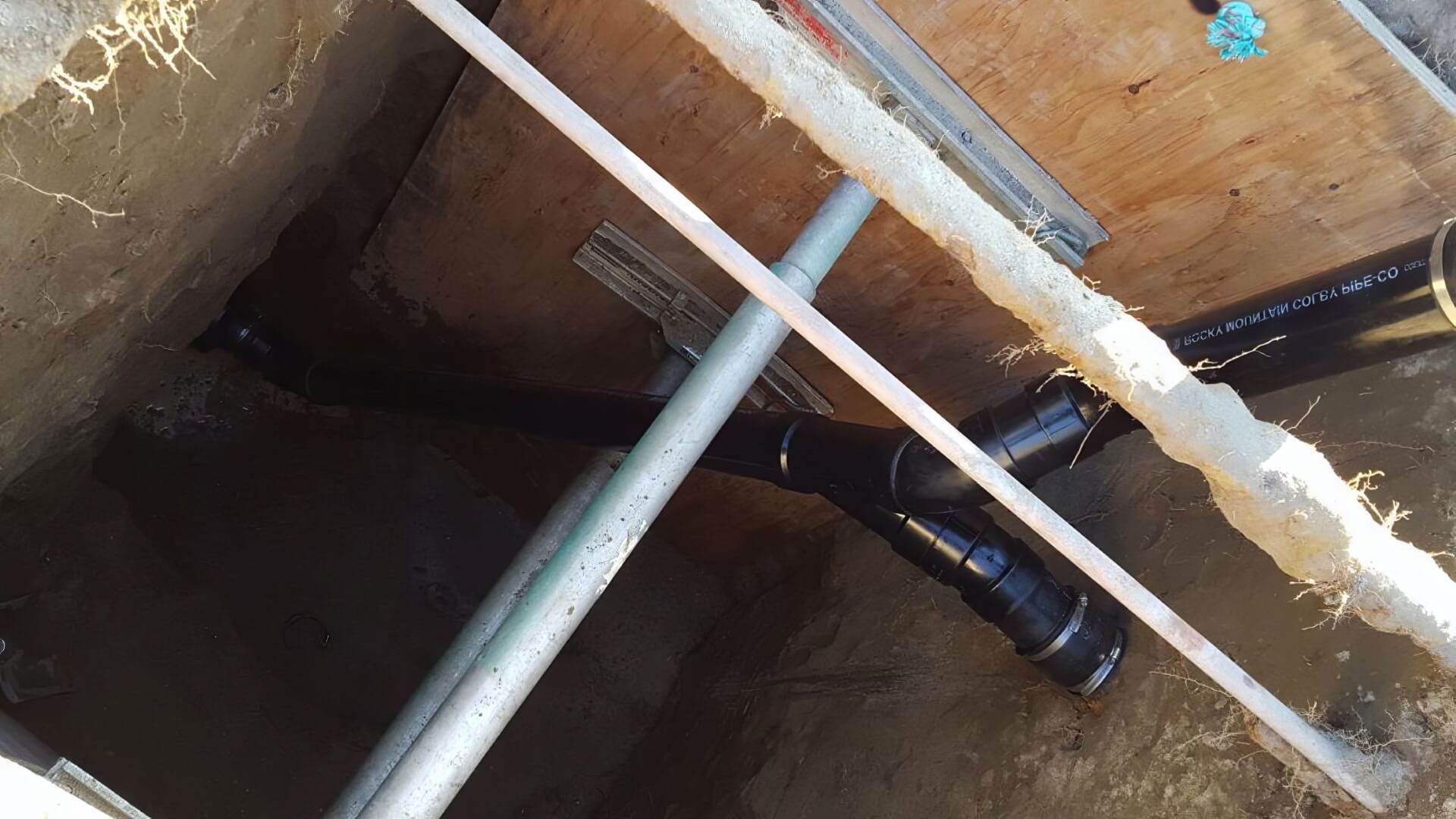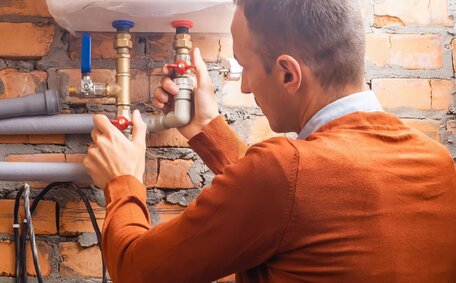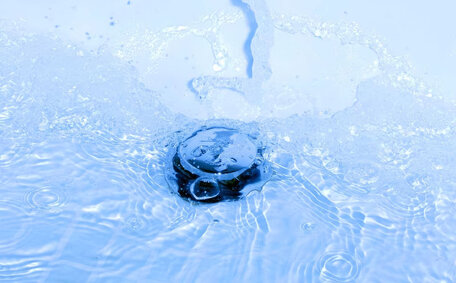Understanding Clogged Drains
Hair, food scraps, congealed fats, and general detritus can accumulate, causing drains to block and impeding water flow through pipes.
Address clogs swiftly to prevent stagnant water flow, backups, potential plumbing damages, and health risks. Prevent blockages by fitting drain screens, properly disposing of fats and performing routine maintenance with natural cleaners.
There are various methods to unclog drain blockages, from simple homemade remedies like boiling water or baking soda solutions to snaking the drain with an auger or high-pressure hydrojetting for severe obstructions. Selecting the right method is crucial in effectively clearing a stubborn drain blockage.
Identifying a Clogged Drain
There are several signs that can indicate a clogged drain, including:
- Water draining slowly or not at all
- Gurgling sounds coming from the drain
- Water backing up from drains or emerging through other fixtures
- Unpleasant sewage odours coming from the drain
Your sink in the kitchen commonly gets clogged from food waste and grease buildup. Bathroom sinks and showers tend to clog up due to the buildup of hair and soap scum. Toilets can get blocked due to toilet drain blockage from excessive toilet paper or other items that shouldn’t be flushed.
As a first step, after fashioning a makeshift coat hanger tool, remove any drain screens or stoppers and try to run water through the drain to assess the blockage. The severity of the clog will determine next steps, which may range from homemade solutions to more intensive methods like using a drain cleaner, snaking or professional hydro jetting services to remove clog.
Using a Plunger
Choosing the appropriate plunger is crucial for effectively dislodging clogs. For sink drains, use a flanged cup plunger or a drain auger which seals over the drain opening. For toilets, Use a flanged force cup plunger for your shower drain to ensure a tight seal.
Follow these steps to clear clogs with a plunger or use a plumbers snake when necessary:
- Start by removing the drain stopper or cover plate, which may cover the drain completely, so you can pull out any visible debris explicitly.
- Position the plunger directly over the drain or fit it snugly against the overflow plate to form a tight seal.
- Brace the plunger handle against the palm of your hand and plunge straight down with quick, forceful strokes. Diligently work the plunger as an effective method to clear your blocked pipes.
- After vigorous plunger pumps, pull back to let water through and check if the clog has cleared.
- Continue plunging, ensuring a tight seal each time, until the clog breaks up and water flows unobstructed.
Applying consistent downward pressure is the most effective technique. Plunging at angles risks damaging pipes. Contact a local plumber who can unclog any drain if a plunger doesn’t resolve the clog after a few attempts.
Tips for Effective Plunging
Follow these crucial techniques for efficient plunging to remove blockages:
- Fill the sink with a cup hot water, pouring it into the basin first to help soften and break up clogs before using a plunger.
- Make sure to create a tight seal over drain with the plunger so you maintain suction necessary to thrust directly down on the blockage.
- Use quick, vigorous strokes straight down your drain while bracing the plunger handle against your palm.
- Check drainage after every few plunges, pulling the plunger back to let water flush through and break up clog.
- Don’t plunge at angles as this can damage pipes - always go straight down.
- Allow intervals for water to seep and assist in breaking up clogs between plunging rounds.
- Avoid trying to plunge partial blockages that allow some water flow - this usually pushes what’s clogging up the drain farther down.
Persistence and efficient follow up is key with proper plunging technique. Repeat the process, ensuring water into drain is flowing to attack clogs from multiple angles. Caution is advised to prevent cracks or leaks - call a professional if plunging doesn’t resolve the issue.
Trying Baking Soda and Vinegar
A baking soda and vinegar combination can create a chemical reaction that effectively clears minor sink clogs. Combining these ingredients—beginning with one cup baking soda—along with dish soap if needed, creates a chemical reaction that helps break down buildup.
To dissolve minor blockages with this home remedy, start with a mixture of baking soda and vinegar: pour 1 cup of baking soda down the kitchen sink drain followed by 1 cup of vinegar. The vinegar, roughly one cup, will react with the baking soda, fizzing and bubbling as it works to break up gunk, oils, and organic matter clogging the drain.
Let the mixture sit in the drain for a few minutes, then rinse with hot water to flush out debris. You may need to repeat the process a few times for stubborn clogs; consistent effort can often do the trick. This method is cost-effective and eco-friendlier compared to using harsh chemical drain cleaners.
For severe clogs, call a professional plumber who can properly diagnose the issue and utilise methods like snaking or hydrojetting if needed to clear blocked drain effectively.
Mixing the Baking Soda and Vinegar Treatment
To create an effective treatment for your drains using baking soda and vinegar:
- Measure out a half cup baking soda (125ml) and gently pour it down the drain.
- Let the half cup of drain baking soda settle in the drain for a minute, then pour the vinegar.
- Next, add 1 cup (250ml) of household white vinegar to the drain, letting it react with the baking soda.
- Adding a cup vinegar to the mix will react with the baking soda, bubbling and fizzing as it works to break down buildup.
- Cover drain with a wet rag or stopper and let mixture sit for 2030 minutes then flush with warm water to ensure effective clog removal.
- After letting it sit, run very hot water down drain passages for a minute or two to help flush away debris.
- For stubborn blockages, repeating the treatment several times might be necessary.
While flushing drains with boiling water, ensure safety against splashing and burns by wearing gloves and protective eyewear if necessary.
Using a Drain Snake/Auger
A drain snake, also known as a cable auger, is a flexible metal cable used by plumbers to physically clear obstructions in pipes and drains. As the cable enters the drain, its metal spiral tip latches onto debris, allowing you to extract it.
There are a few types of drain snakes:
- Hand snakes - Operate manually with a crank, perfect for sink, bathtub, and shower drains
- Electric powered - More torque for tough clogs deeper in main lines
- Closet augers - Specifically designed for toilets
To use a drain snake:
- Remove any drain cover plates to access the pipe.
- Carefully manoeuvre the snake through drain, cranking the handle until you locate and dislodge the clog.
- Rotate the cable as you extract it to wipe the pipe walls clean.
- Flush with hot water to wash away loosened debris.
Exercise caution to preserve your pipes and seek expert aid for safely clearing severe or hard-to-reach blockages without causing damage.
Choosing the Right Snake/Auger
It’s important to select the right type of cable auger or drain snake to remove blockages effectively. For accessible sinks, shower and tub drains, a standard hand-crank auger with a 1/4 to 1/2 cable is ideal. This auger can dislodge hair, soap scum, and debris within approximately 3 metres of the pipe.
For deeper main line clogs beyond the bathroom sink trap, you can use a powered drum auger with at least a 5/8 cable. The motorised models have greater torque to root out thick buildup. A closet auger is specially angled to navigate the tricky path to clear toilet clogs.
In general, match the size of the cable to the diameter of the pipe - larger pipes need a heavier-duty snake. Getting the right length is also important to reach clogs farther down runs. Avoid anything too large or high powered for delicate sink traps, as it risks cracking them.
Assessing the drain layout and knowing your plumbing system will ensure you select a suitable auger. Otherwise, professional drain technicians have specialised camera equipment and an array of commercial-grade electrically powered snakes to clear even the most stubborn obstructions.
Snaking Bathroom vs Kitchen Sinks
Snaking bathroom sinks as opposed to kitchen sinks demands distinct techniques and considerations.
Bathroom sink pipes tend to be narrower, usually 1-1/4 to 1-1/2 inches in diameter, while kitchen sink drains are often 2 inches wide. Smaller bathroom augers are required to avoid scratching the delicate porcelain fixtures.
Accumulations of hair and soap often result in blockages within bathroom sinks. In kitchen sinks, grease, food scraps, fat, and oils are more likely to cause blockages. The type and amount of debris can impact the snaking method and tools used to clear it.
Angling and manoeuvring an auger takes more finesse in bathroom sink traps compared to kitchen sinks with more direct down pipe PVC piping. Closet augers are specially designed with the appropriate bend to handle toilet clogs versus other bathroom or kitchen fixtures.
In all cases, take care not to over-crank the auger to prevent cracking pipes or porcelain. Knowing the configuration of your drain system is key to effective use of drain snakes at home.
Calling a Professional Plumber
When home drain cleaning attempts don’t fix a severe blockage, enlist a local plumber like Ryde Plumbing for comprehensive drain cleaning services.
Licenced professionals have specialised equipment like cable machines, high powered hydro jetting, and camera inspections to thoroughly diagnose and clear drain obstructions. They can also check your drain system to spot issues you may not detect on your own.
Our certified plumbers provide 24/7 emergency services, including drain snaking and clearing throughout Ryde, Sydney. We use state-of-the-art methods for fast, effective results without damage. Contact us on 1300 349 338 or [email protected] for urgent assistance or to book routine maintenance.
Signs You Need a Pro
It’s time to call a professional plumber if you have attempted several DIY methods without success at resolving your blocked drain. Specific signs that indicate the need for professional help include:
- Water pooling around multiple drains
- Water backing up from one fixture into another (e.g. tub drain into sink)
- Multiple fixtures all draining slowly
- Unpleasant sewage odours coming from multiple drains
- Outdoor drain issues like water pooling around foundation
- Any signs of water damage beginning to occur
- A drain that was cleared starts clogging again soon after
In these cases a professional assessment is needed to inspect your pipes with camera equipment, correctly diagnose the issue and utilise commercial drain clearing methods as required. Our licenced plumbers at Ryde Plumbing have the tools and expertise to tackle severe clogs and prevent future blockages.
Hydro-Jetting Services
Hydro-jetting is an advanced method of clearing severe drain clogs using highly pressurised water. Specialised nozzles emit narrow streams at up to 5000 PSI to scour the full interior diameter of pipes.
This high-pressure strategy is extremely effective, often followed by a cold water rinse to dislodge thick buildup, tough blockages, grease, debris and even tree roots adhered to pipe walls. The high velocity water essentially power washes the blockages out drain from the inside out.
Hydro-jetting should be considered to clear blocked pipes that standard augering cannot resolve, or for routine maintenance of older drain systems prone to heavy grease or soap accumulation.
As industry leaders in the latest plumbing technology, Ryde Plumbing offers specialised hydro-jetting services across Ryde, Sydney. Our state-certified technicians can diagnose drain issues with pipe camera inspections and deploy highpressure water treatments for residential or commercial sites.
Preventing Future Clogs
There are several effective ways to help prevent future clogged drains:
- Use drain catchers and screens to trap hair and debris before it enters the pipe.
- Pour cooking oil and grease into a sealed container to solidify, then remove drain buildup by disposing of it responsibly - never allow it to flow down drains.
- Forgo the use of harsh chemicals in drain cleaners which can be detrimental to your pipes.
- Perform light weekly drain maintenance by pouring a baking soda and vinegar treatment or hot water flush.
- Have annual inspections by a licenced plumber to check for issues before they become blockages.
Small changes in kitchen and bathroom habits can greatly reduce the buildup in pipes that leads to clogs. Catching small clogs early with regular drain care makes clearing them much easier and prevents major pipe damage down the line.
For ongoing prevention support, the professional drainage specialists at Ryde Plumbing offer affordable maintenance plans to keep your pipes clear.
Drain Screens
Using drain screens is an effective way to prevent clogs by trapping debris before it enters your pipes. Different types are suitable for various drains:
- Sink drain screens - Sit in the drain opening to catch food scraps and particles. Fine mesh screens trap smaller debris.
- Tub drain covers - Cover over the drain to catch hair and other materials without obstructing water flow.
- Inline sink traps - Installed underneath to catch debris but allow water to pass through.
- Floor drain screens - Coarse screens trap larger materials while allowing water to still drain.
Ensure screens fit snugly to effectively capture debris. Clean them regularly before buildup occurs. Avoid screens with very fine mesh that may restrict water flow.
Fit screens in laundry and floor drains to trap lint and dirt before they enter the plumbing system.
Drain screens should be used along with other preventative measures like avoiding grease and regular drain maintenance. Contact Ryde Plumbing if you have any drainage issues.
Avoiding Grease Buildup
Grease, oil and fat should never be poured down kitchen drains. As these substances cool and congeal, they adhere to pipe walls, leading to severe blockages over time. It is extremely difficult for both DIY methods and professional drain clearing efforts to remove thick grease buildup.
To avoid grease-related clogs and ensure smooth liquid drain flow:
- Pour cooled grease, fats and oils into an empty can or jar. Allow to fully solidify then throw into your regular garbage.
- Wipe pans with a paper towel before washing to absorb excess grease and stop it from entering the drain.
- Consider installing a grease trap filter or interceptor on your kitchen sink plumbing or a garbage disposal to catch oils before they enter pipes.
- Minimise the use of strong detergents that may displace grease further into the piping rather than eliminating it.
Being mindful of grease disposal will significantly reduce blockages over time. Ryde Plumbing offers affordable grease trap installations and maintenance to prevent this common issue.






